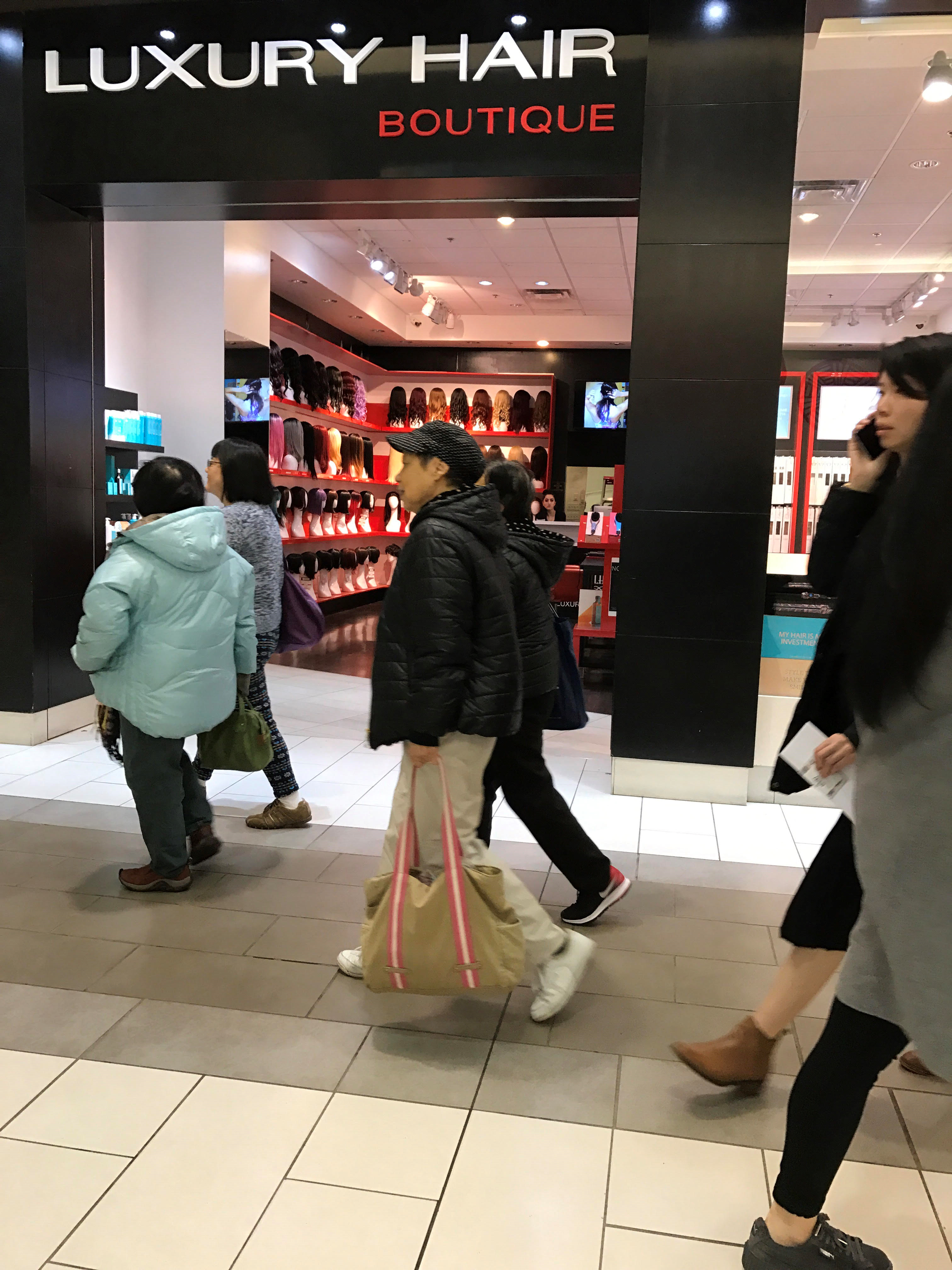Conscious Consumerism
This photo was taken in March 2017 at Metrotown mall in Burnaby. I decided to take my photo here as Metrotown, being the second largest mall in Canada, to me represents a beacon of consumerism and the presence of a hair extension store ties into the course theme of commodities. Shopping malls truly exemplify the way in which an individual’s buying decisions can influence a global economy and lives around the world. Consumers of goods such as clothing, cosmetics, and other commodities are driven to purchase these items, sometimes by impulse, without a regard or attempt to understand how and where these goods are produced. Consumers may be oblivious to the atrocities that are committed in the process of producing these products, such as child labour and the exploitation of workers who live in other countries.
In the instance of hair extensions, many individuals are compelled to purchase them in an attempt to make their hair look longer and thicker or just to follow current trends. This market has seen significant growth in recent years and experts note that “the global market for hair extensions is expanding at an incredible rate” (First Step Marketing, 2015). The recent boom the hair extension industry has experienced can be, in part, attributed to “the celebrity culture [that] has made hair extensions more popular” (First Step Marketing, 2015) with celebrities endorsing and even creating their own brands of hair extension products. Despite the rapid growth in demand for human hair extensions, Professor Emma Tarlo notes that “few know where these lustrous locks come from and the journey they take across the globe” (BBC, 2016). Consumers of hair extensions are unaware of the linkage between their buying habits and the lives of women, for the most part, on the other side of the world who have few choices to earn an income other than to be a part of the hair supply industry. According to Tarlo, women all over Asia save hair that falls out when they comb and wash it in the hopes of making a few dollars when a sizable amount is collected. In hair untangling workshops again it is mostly women who untangle and sort other people’s hair into bunches. Tarlo points out that “[it is] painstaking work, and very labour intensive” (BBC, 2016). A parallel between this tedious line of work can be drawn to compare with the concept of “ ‘female’ traits including attention to detail, docility, and dexterity” (Patel-Campillo, 2012) that contribute to the gendered nature of work in the Colombian flower industry. In both instances there is an intersectionality between being a woman, being a person of colour and being poor that leads to individuals resorting to employment that is tedious and/or meticulously saving strands of their hair to sell for a small price.
As demonstrated, there is a link between a consumer’s buying decisions and the demand it creates for a product, and therefore labour to produce it. Being aware of the power and influence that one has as a consumer combined with knowing the process in which it takes to produce a product that one is buying leads to conscious consumerism. Before buying hair extensions or other commodities, it is essential to consider where the product is coming from and at whose expense it is being produced.
Works Cited:
Brewer, K. (2016, November 1). Untangling Where Your Hair Extensions Really Come From. BBC News.
Hair Extensions. (2015, July). Retrieved from
http://finalstepmarketing.com/wp-content/uploads/2015/07/Hair-Extensions-Market-Research.pdf
Patel-Campillo, A. (2012). The Gendered Production-Consumption Relation: Accounting for Employment and Socioeconomic Hierarchies in the Colombian Cut Flower Global Commodity Chain. Sociologia Ruralis, 52(3), 272-293. doi:10.1111/j.1467-9523.2012.00569.x
